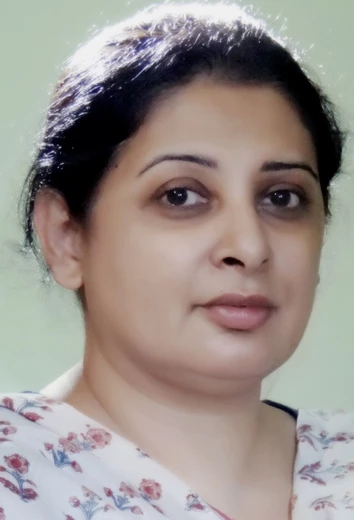 MCLLMP Knowledge Management Team
MCLLMP Knowledge Management Team
Meghalaya – a north-eastern state in India - means “Abode of Clouds” in the local language. True to its name, the state is blessed with abundant rainfall and forest cover. Despite this, it is vulnerable to the negative impacts of climate change as well as human-generated factors such as unrestricted mining, threatening forest and water resources, and by extension the livelihoods of those who depend on the land. However, Meghalaya has risen to meet these challenges using a community-centered approach to drive lasting change.
Land and water management in Meghalaya
Distinct from the rest of India where the states are responsible for the protection and management of forests, nearly 90 percent of the forests in Meghalaya have been managed under customary law by the Khasi, the Garo, and the Jaintia tribes for centuries. However, these community-managed ‘unclassified’ forests are not covered under forest management laws and do not receive significant technical or financial support from state institutions. The situation is similar for water bodies and river management.
Meghalaya Community-Led Landscape Management Project
The World Bank-funded Meghalaya Community-Led Landscape Management Project (MCLLMP) leverages the state’s community-owned systems of land, forests, and water assets to establish a model for community-led natural resource management (NRM), specifically forests and water, that could be replicated in other parts of India.
In 2018, MCLLMP started implementation of landscape management plans drawn up by 400 villages to restore their land and water resources using a one-time grant. To date, the project has supported 4,500 interventions aimed at empowering communities to revitalize their natural resources using traditional practices. The MCLLMP has disbursed more than Rs 75 crores (US$9.4 million) of NRM grants to restore 204 hectares of mine-spoiled land, reforest 6,000 hectares, and implement soil and water conservation measures across 14,000 hectares, and agri-horticultural activities on 5,000 hectares of land. To build human capital, the project has trained 17,695 people, including 6,487 women, on technical and financial subjects, with a strong focus on digital technologies.
The project also crowdsourced solutions, providing grants to applicants large and small whose proposals had the most potential to improve degraded landscapes and were based on reviving traditional practices, using technology and scientific inputs, with Rs 9.5 crores (US$2 million) disbursed so far.
In convergence with the provisions under the Mahatma Gandhi National Rural Employment Guarantee Act (MNREGA), an Indian labor law and wage employment program, communities have mobilized Rs 2.1 crores (US$263,978) in addition to their own contribution of Rs 1.22 crores (US$153,472) to help fund interventions. Agri-horticulture, nurseries and composting units provide additional income, with Rs 1.30 crores (US$163,365) generated thus far.
MCLLMP at Village Level
Aminda Simsanggre is a remote village in Meghalaya State off the main road network. With very limited access to piped water, the largely agrarian community depends on local springs for their drinking and other water needs. Prior to MCLLMP, many springs had begun to dry up while those that flowed were often contaminated.
In early 2020, the community identified the lack of safe drinking water and limited livelihood opportunities as major concerns. Village residents were united in their desire to solve these problems using the MCLLMP NRM grant.
By late 2020, the community had already constructed check dams, water conservation dams, and water storage facilities, directly benefiting households by improving access to safe drinking water. They established plantations and community nurseries to replenish tree cover lost to logging and jhum (shifting) cultivation. And dug extensive contour trenching to capture rain-water runoff and prevent soil erosion, a major contributor to landscape degradation in the region.
Gender-inclusive strategies to improve productivity
For the women of the community, the NRM activities became a rallying point to collectively find solutions to common water, health, and livelihood challenges. In the past two years, women’s participation in the executive committee of the Village NRM Committee (VNRMC) has increased, despite initial uncertainty.
“I started helping MCLLMP team without knowing how this project will give us the benefits,” said Tanuja G. Momin, VNRMC member, “but comparatively from before the project, I could really see the differences in water availability.”
And the community is reaping the benefits of the project’s capacity development interventions. “Before the project, we had very less knowledge about environment, water catchment and the importance of natural resources,” said Pretish S. Sangma, VNRMC Secretary. “Our people are benefitting as they are able to get water any day, any time. And not only that, but we have established community nurseries … we provide and transplant trees in the catchment areas and also sell saplings to neighboring villages.” The village has already recorded sales of Rs 59,000 (US$742). The village has another cause for celebration – earlier this year, the VNRMC was an awardee at the National Water Awards from the Central Government.
Looking ahead: Inclusive development and human capital key to natural resources management
Ultimately, the Meghalaya CLLMP’s decentralized planning and focused skill development approach has proven to be a successful model for strengthening local capacities to effectively manage natural resources. As Meghalaya State prepares to roll out the project approach across all districts in an initiative called Green Meghalaya, Aminda Simsanggre provides a template for effective community participation.
There are no shortcuts to a greener tomorrow, but long-term investments in people and know-how will help us in getting there faster.
The authors wish to thank the PMU, MCLLMP, for providing the data and numbers mentioned in this blog. Photo credit: MCLLMP Knowledge Management Team.



Join the Conversation